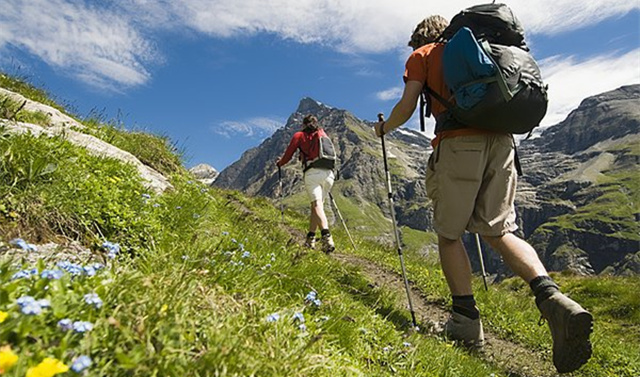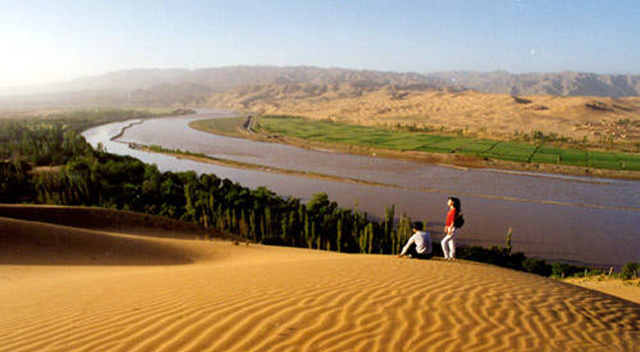Shoes are not suitable for the beautiful route can not go out
Before taking part in outdoor activities, choose a pair of suitable outdoor shoes, which not only allows you to cope with the complicated road conditions of the trip, but also determines the success or failure of your trip. However, some outdoor people often do not know what kind of outdoor shoes they should wear because they lack understanding of the performance and technical parameters of shoes and shoes that are suitable for various road conditions. The following principles can make you stop entangled when you travel, calmly start.
First, the principle of high is not low:
If you don't know the topographical features of the area you are going to, you should choose high-low and low-grade shoes when you choose shoes. If you can't decide on the hiking series and the crossing series, then you should choose to go through the shoes. At best, you can feel more heavy, but it can better protect your feet, because in the impact resistance or support, high-end outdoor shoes Gives better protection to the feet.

Second, the principle of leaving room:
People choose shoes in their daily lives and always try to fit their feet, but when choosing outdoor shoes, they need to leave a margin, because the feet will expand when walking long distances. The larger one, tightening the laces will make the heel close to the back, and the front end has a little room, so that the foot will reduce the squeeze during the forward stroke, thus reducing the damage to the toes.
Need to be reminded that when wearing outdoor shoes, you should choose a thicker socks to fill the gap between the shoes and the feet, which can effectively prevent the feet from blisters. As for the shoe width standard, it should not be loose, because no matter which series, there will be some slack after wearing a period, so there is no need to leave room.

Third, long-term travel should choose waterproof shoes:
The outdoor natural scenery is very attractive, but the climate of nature is complex and changeable. Travelers need to be prepared to cope with all kinds of changes, so travel time is longer. Choose shoes to be waterproof. A pair of outdoor shoes with Gore-Tex lining can give you all-weather protection. If you choose Gore-Tex outdoor shoes, you should also choose a sweat-wicking sock (preferably Coolmax material) that works best together.

Fourth, pay attention to the anti-slip properties of outdoor shoes:
Anti-slip is one of the basic characteristics of outdoor shoes, and it is also an important indicator to check the performance of a pair of shoes. Good anti-slip is more conducive to the stability of walking, thus reducing injuries. Objectively speaking, from the characteristics of rubber, the anti-slip property and wear resistance are a pair of contradictions. The anti-slip property requires the higher the rubber density, but the density is inversely proportional to the friction coefficient. The brand of the shoe is to solve the problem of the anti-slip of the sole. A lot of articles have been made on patterns and rubber surfaces to make outdoor shoes have better slip resistance.
The slip resistance of the sole will decrease after a period of wear, especially on wet and hard ground. The extremely high density of rubber often affects the slip resistance, but it is not affected on the dry ground. The Vibram outsole is familiar to outdoor people. There are characteristics in this regard. Vibram rubber is recognized as the strongest abrasion resistance. In use, you will find that the slip resistance will be compromised on wet hard ground, while the relatively soft bottom is better. The key question is what kind of you are. Used in the environment.

5. Try to wear after running:
The reason why outdoor shoes have strong support is that the sole is very hard, and the upper is tight and firm, so that the support of the foot can be enhanced when the weight is heavy, but this relatively rigid design structure is often used when the new shoes are just on the foot. It is not possible to adapt immediately, and it is necessary to have an adaptation period. Therefore, before purchasing a new shoe, it is best to run it on the foot for a week. If you feel uncomfortable, go out outdoors.

The main raw materials for cosmetics are usually divided into general matrix materials and natural additives. Cosmetic universal matrix
Raw materials include: oily raw materials, surfactants, humectants, binders, powders, pigments, dyes, preservatives, antioxidants, perfumes.
Oily raw material
Mainly refers to oils, wax raw materials, hydrocarbons, fatty acids, fatty Alcohols and Esters, etc., is a major raw material for cosmetics.
Vegetable oil: linseed oil, sunflower oil, cottonseed oil, soybean oil, sesame oil, olive oil, coconut oil, castor oil
Animal fats: mink oil, egg butter, lanolin, lecithin, etc.
The waxes mainly used in cosmetics are: palm wax, candelilla wax, jojoba wax, wood
Wax
Hydrocarbons: liquid paraffin, solid paraffin, microcrystalline paraffin, ceresin, petrolatum, and the like. Myristic acid, myristate, squalene, squalane, etc.
Synthetic raw materials: squalane, lanolin derivatives, polysiloxanes, fatty acids, fatty alcohols, fatty acid esters, lanolin, lanolinic acid, pure wool wax, acetic acid wool wax, acetylated wool alcohol, polyoxyethylene hydrogenation Lanolin and so on.
Inorganic powder materials used in cosmetics are: talc, kaolin, bentonite, calcium carbonate, magnesium carbonate, titanium dioxide, xin
Powder: talcum powder, kaolin, bentonite, titanium dioxide, silicon powder
The organic powder raw materials include zinc stearate, magnesium stearate, polyethylene powder, cellulose microbeads, polystyrene powder, etc., and are mainly used in cosmetics of various powders such as talcum powder, powder, powder, rouge and the like. As an adsorbent.
Daily Cosmetics Raw Materials,Daily Chemical Materials,Surfactant Materials,Cosmetic Additive
Jinan Huijinchuan Chemical Industry Co., Ltd. , https://www.hjcchemical.com